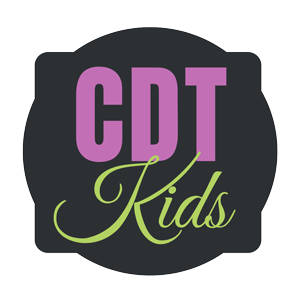
What is pediatric physical therapy?
Pediatric physical therapy is a specialty that deals with the wide variety of diagnoses that may affect your child's overall development from 0 to 18 years of age. Depending on the age, disability, and setting, the role of the pediatric physical therapist differs greatly. However, the primary role that the pediatric therapist assumes is to be an advocate for you and your child.
Gross Motor Developmental Milestones
Do you need PT? Click here to submit a Therapy Inquiry Form
Pediatric physical therapists help to ensure that your child's physical performance in every day activities is at its best. CDT Kids therapists rely on the implementation of their expert knowledge of the neurological, musculoskeletal, cardiopulmonary, and integumentary (skin) systems to help your child in any one of the following ways:
- Achieve age-appropriate developmental milestones (e.g., crawl, sit, stand, walk)
- Better participate in age-appropriate gross motor or school activities with peers
- Improve range of motion, strength, mobility, posture, balance, endurance for independent function
- Improve your child's ability to independently negotiate his or her environment (home, school, job, community)
- Actively participate and contribute to the society at large
Treating your child includes examining, evaluating, and assessing the areas in which your child may have difficulty functioning and then incorporating activities to address these areas. After examining your child, the physical therapist will make an evaluation of his findings using any combination of standardized tests, observations, and/or clinical expertise.
Once an assessment has been reached, your therapist will discuss his findings with you and educate you on your child's needs; educating caregivers (and your child when possible) on the nature or extent of injury, disability, and the prognosis is an essential component of pediatric physical therapy and helps to keep the caregiver involved and informed of the child's progress. You will also review the plan of care with your therapist, which will entail a discussion of the number of visits, frequency, duration of physical therapy, prognosis, and home activities you must do with your child to help him excel in his areas of difficulty.
Together, you will then create an individualized program specific to your child's goals and/or the family's goals. Activities in the form of play are provided to help your child be better motivated to reach his goals. Your role as a caregiver and your compliance with your child's home program are extremely important for a successful plan of care.
Physical therapy concentrates on increasing the child’s mobility, range of motion, and functional motor skills, improve posture and conditioning, and prevent or slow orthopedic problems. If your child is receiving physical therapy, his or her treatment may include activities that address one of the following:
- Upper and lower extremity strength, tone, coordination
- Overall mobility, agility and balance
- Bone and joint injuries
- Pain Management
- Muscle disorders
- Gait Training (how to walk)
- Working with assistive devices (i.e. crutches, walkers, wheel chairs)





